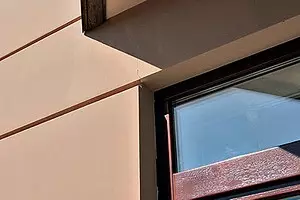
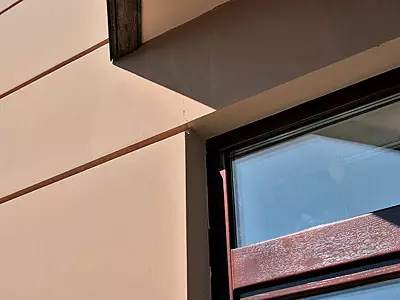
To answer this question, it is necessary to understand the principle of formation of the film LKM. It is associated with two multidirectional processes - the emergence of internal compression stresses during polymerization and adhesion. The forces of adhesion (SAD) are trying to keep the film on the surface of the base, and the internal stresses (SVN) are to disrupt it. The stabilizing factor is the strength of the film (SPR).
In order to determine which paint is best suited for this facade, it is necessary to figure out even in the classification of LKM. First of all, the paints are divided by the types of solvent. The paints on organic solvents are formed dense, and therefore the surface film is almost or not at all (the exclusion is based on the PLIOLITE resin) and are designed for wooden and metal surfaces.
Water soluble paints practically do not smell, dry quickly. The ability to "breathe" in the film formed by them is quite large, and therefore they are suitable for mineral surfaces. Binding substances - another most important component of the LKM. It is the binder that gives the paint the name - oil, alkyd, acrylic, etc.
Oil paints are perhaps the cheapest view of the LKM, where the binding serves oil. Such materials form a sufficiently dense, poorly "breathable" film, and therefore are used mainly for the color of the tree. As for enamel, for facade works are the most suitable for their two types: alkyd and polyurethane. Alkid enamels create a dense, rigid, rather durable, but relatively fragile film. Polyurethane is more elastic and smooth, but at the same time, the film is stronger and resistant to scratch and shock.
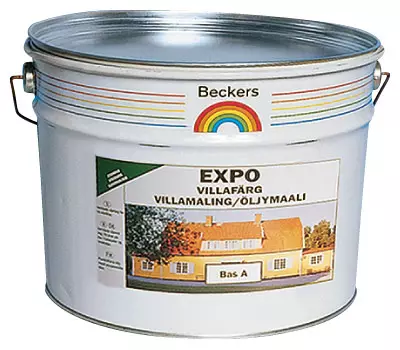
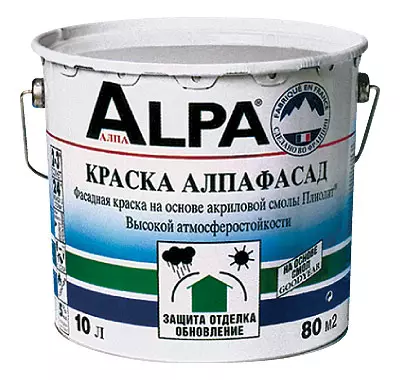
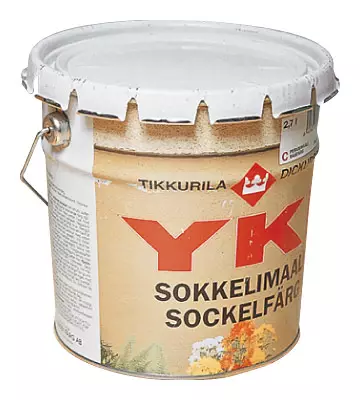
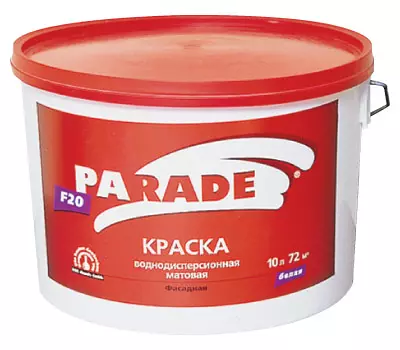
Select the facade paint follows from the features of the materials
Outdoor walls at home
Acrylic paints on an organic solvent, as a rule, are polyacrylate-based matte compositions. They are used for painting plastered surfaces and concrete. Water soluble paints are classified as follows: compositions based on aqueous dispersions of various polymers and mineral.
Minerals are usually used for mineral surfaces or bases previously covered with these materials. The strength and durability of the coatings obtained with them are low, the use of such materials for the color of the facades is undesirable.
Water-dispersive materials are available on the basis of four types of dispersions: polyvinyl acetate (PVA), styrene butadiene, acrylic, silicone. Of these, two last varieties are suitable for coloring facades.
Paints based on acrylic dispersions are universal. To obtain a high-quality finish coating, it is enough to apply two layers on the surface. At the same time, the coating is not only "breathable", which makes it possible to successfully apply these compositions on mineral facades, but also enough elastic. Silicone-emulsion paints are bred on water and combine the best properties of acrylic and silicate paints: they are almost as high as silicate, and in addition they do not contribute to the development of microorganisms. These materials are suitable for almost all types of mineral surfaces.
And the last group - silicone-modified paints on an acrylic basis. They also guarantee excellent adhesion and good protection from UV rays. Such a coating dries with less surface voltage than even coating on an acrylic basis, and therefore does not form microcracks. They can be applied almost to all in the practice of the substrate.
From practical experience
Before starting the color of mineral surfaces, a series of tests should be conducted:
Estimate the mechanical strength of the surface. If it crept on or on it there is an old peeling paint, the wall must be cleaned, and then may be covered with soil.
Find out the absorbency of the base, splashing on the wall 50-100 ml of water. If the fluid has absorbed literally before the eyes, it means. The hygroscopicity of the wall is too large, which will prevent the normal flow of the film formation process. You can fight this with the help of appropriate soils.
Determine the compatibility of new paint with old. The problem may occur if the wall was used to coated with oil or other paint on solvents, as a result of which the water-dispersion composition is bad or does not fall on the surface. The most radical option is to remove the former layer, but it is a rather laborious process, and often the owners of old houses are forced again and again to use the same paint on the facade as it was covered sometime. If we are talking about the mineral facade, then go, for example, on more economical acrylic water-dispersion paint, it is still possible if you use a special soil or buy paint designed to apply to old oil coatings.
Remove the presence of mold. If it is detected, it can be removed using special solutions.
Determine the presence of calcium salts, poorly or not completely soluble in water. They should also be removed from the surface of the wall before applying the soil and the more paint.
| View of Defect | Possible cause of occurrence |
|---|---|
| Film completely or partially peeling from the surface without cracking | Weak adhesion incorrectly selected paint, unprepared base (SVN> SAD) (SPR> SVN) |
| The film is completely or partially placed from the surface with cracking | The low adhesion was added to the small strength of the film, which could be due to low quality paint, high porosity and poor preparation (cleaning) base (SVN> SAD) (SVN> SPR) |
| Film cracks without peeling | Film strength (reason see above) (SVN> SPR) (SAD> SVN) |
